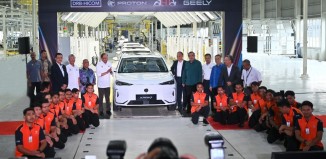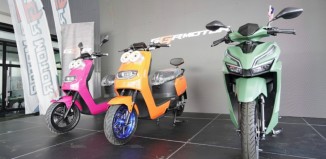Ford Expands Autonomous Vehicle Development
It looks like everyone’s steering towards autonomous vehicles. Ford, in particular, drove up this path back in 2005 when it participated in the Defense Advanced Research Projects Agency (DARPA) autonomous vehicle challenge. The first generation of Ford’s autonomous vehicle was a modified Ford F-250 Super Duty truck for the 2004, 2005 and 2007 DARPA challenges. The second generation was the Fusion Hybrid sedan in 2013. From these, Ford has developed and introduced technologies that allow the cars to park themselves, react to voice commands and detect, alert of and assist in dangerous driving scenarios.
The development of these technologies will continue with the third generation of autonomous vehicles, which remain the Fusion Hybrid, in an increased test fleet size of about 30 vehicles spread over three states – Arizona, California and Michigan, which offer different climate and driving conditions.
“Using the most advanced technology and expanding our test fleet are clear signs of our commitment to make autonomous vehicles available for millions of people,” said Raj Nair, Ford executive vice president, Global Product Development, and chief technical officer. “With more autonomous vehicles on the road, we are accelerating the development of software algorithms that serve to make our vehicles even smarter.”
Building on more than a decade of Ford autonomous vehicle research, this expansion is a key element of Ford Smart Mobility – the plan to take Ford to the next level in connectivity, mobility, autonomous vehicles, the customer experience, and data and analytics.
Ford recently announced its fully autonomous cars will take to the streets of California this year. The company already tests autonomous vehicles at its proving grounds, as well as on public roads in Michigan. Ford was the first automaker to test a fully autonomous vehicle at Mcity – a 32-acre, full-scale simulated real-world urban environment at the University of Michigan. The University of Michigan is leading in the development of sensor-based technologies which aid in the logic and virtual decision-making necessary to help the vehicle understand its physical surroundings on the road.
Ford is also one of the first to use Velodyne’s LiDAR sensors, harking back to the days of DARPA challenges. LiDAR (Light Detection And Ranging) emits short pulses of laser light to precisely scan the surrounding environments millions of times per second and determine the distance to objects, allowing the vehicle to create a real-time, high definition 3D image of its surroundings.
Velodyne’s latest LiDAR sensor, called Solid-State Hybrid Ultra PUCK Auto, fixed on the latest Fusion Hybrid test cars boasts a lighter, sleeker design and a longer range of 200 meters making them the first auto-specific LiDAR sensors capable of handling different driving scenarios.
“Adding the latest generation of computers and sensors, including the smaller and more affordable Solid-State Hybrid Ultra PUCK Auto sensors helps bring Ford ever closer to having a fully autonomous vehicle ready for production,” said Jim McBride, Ford technical leader for autonomous vehicles.





























